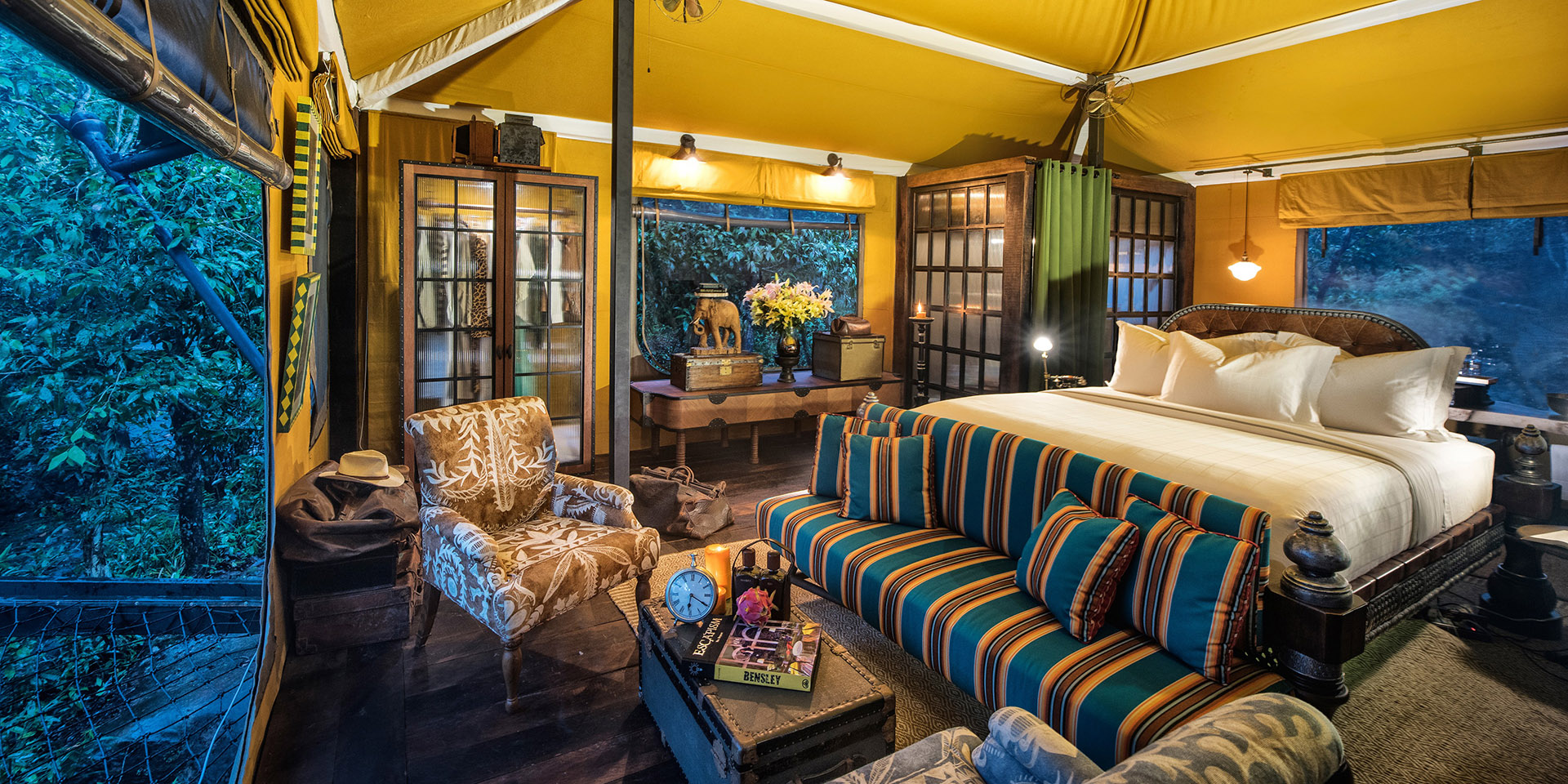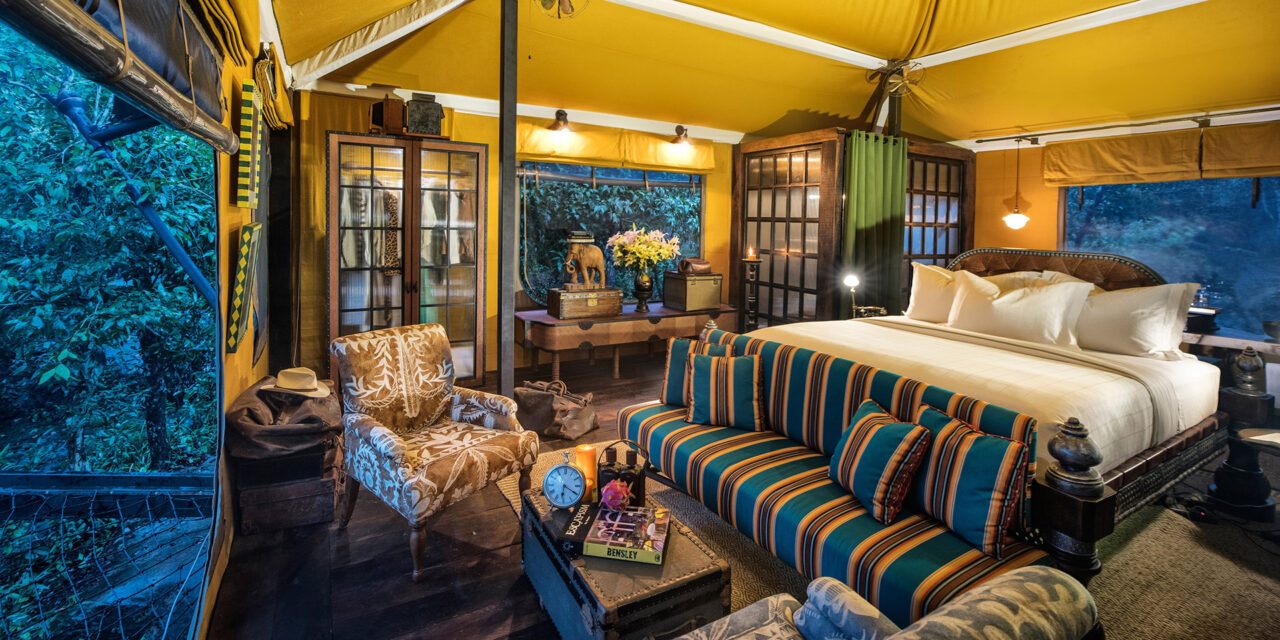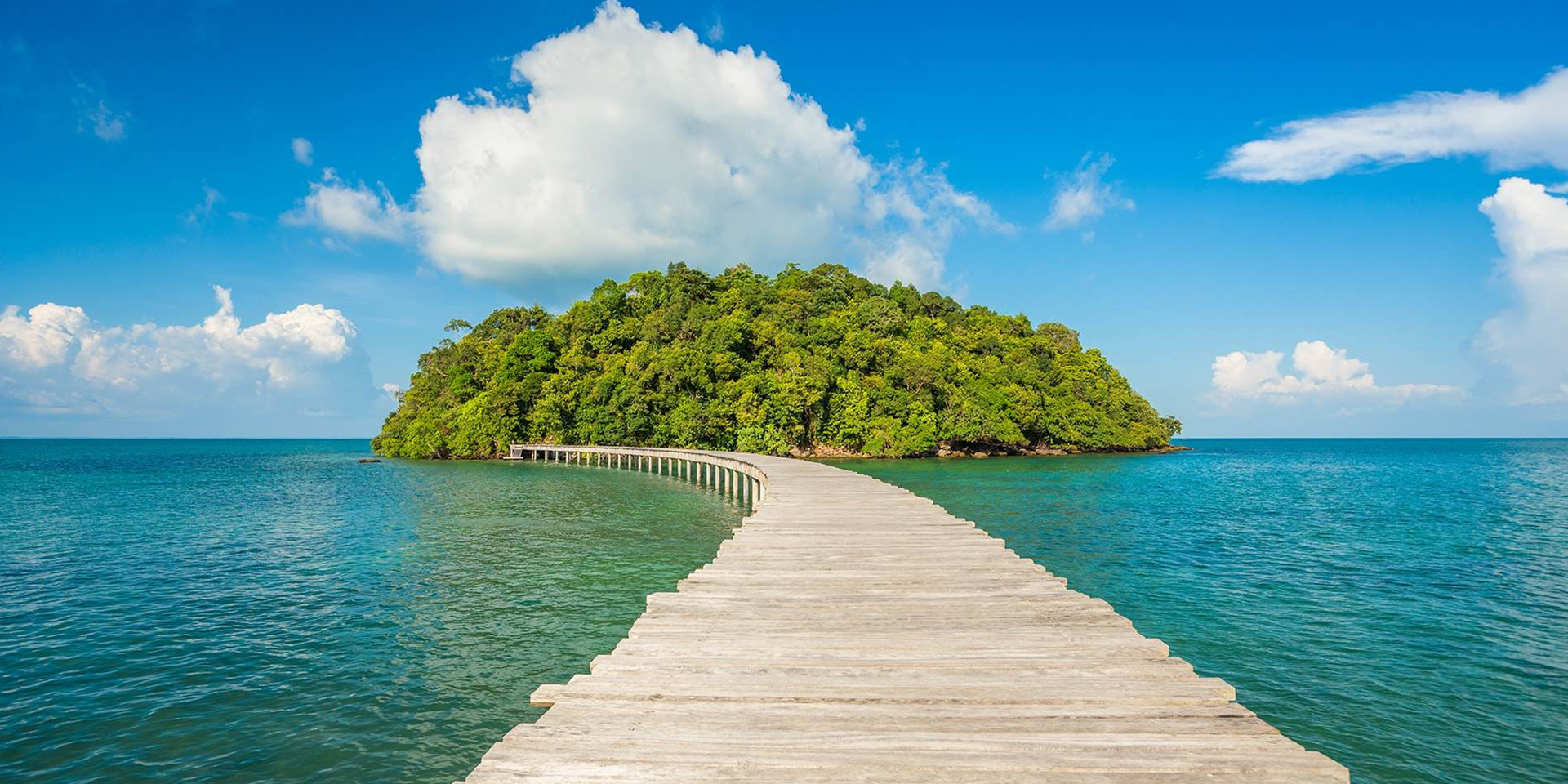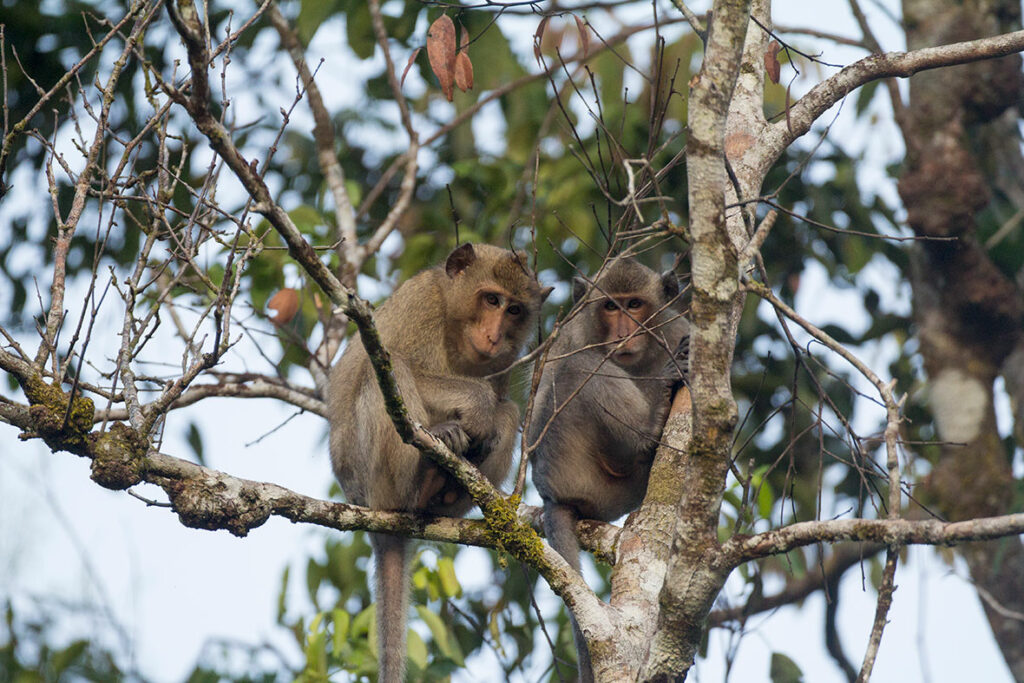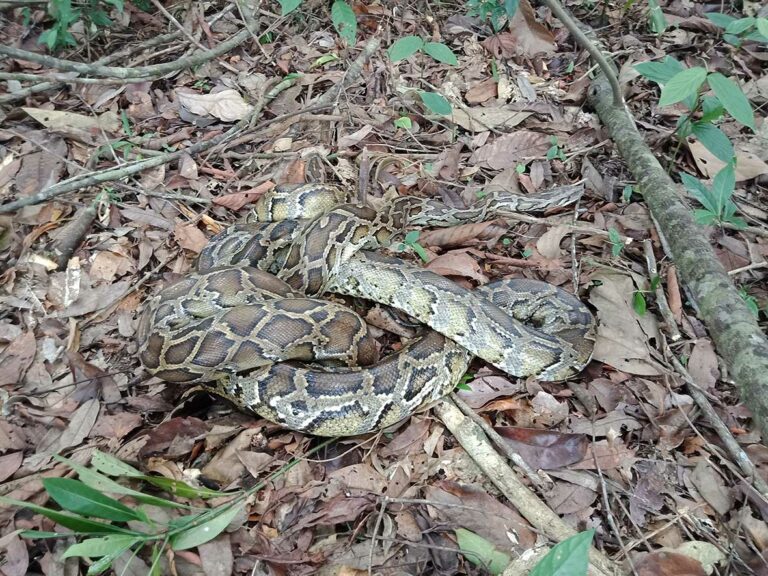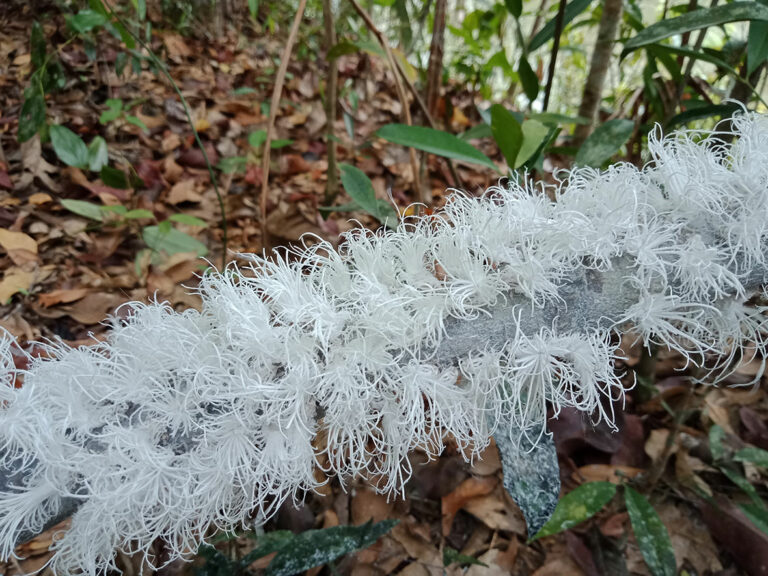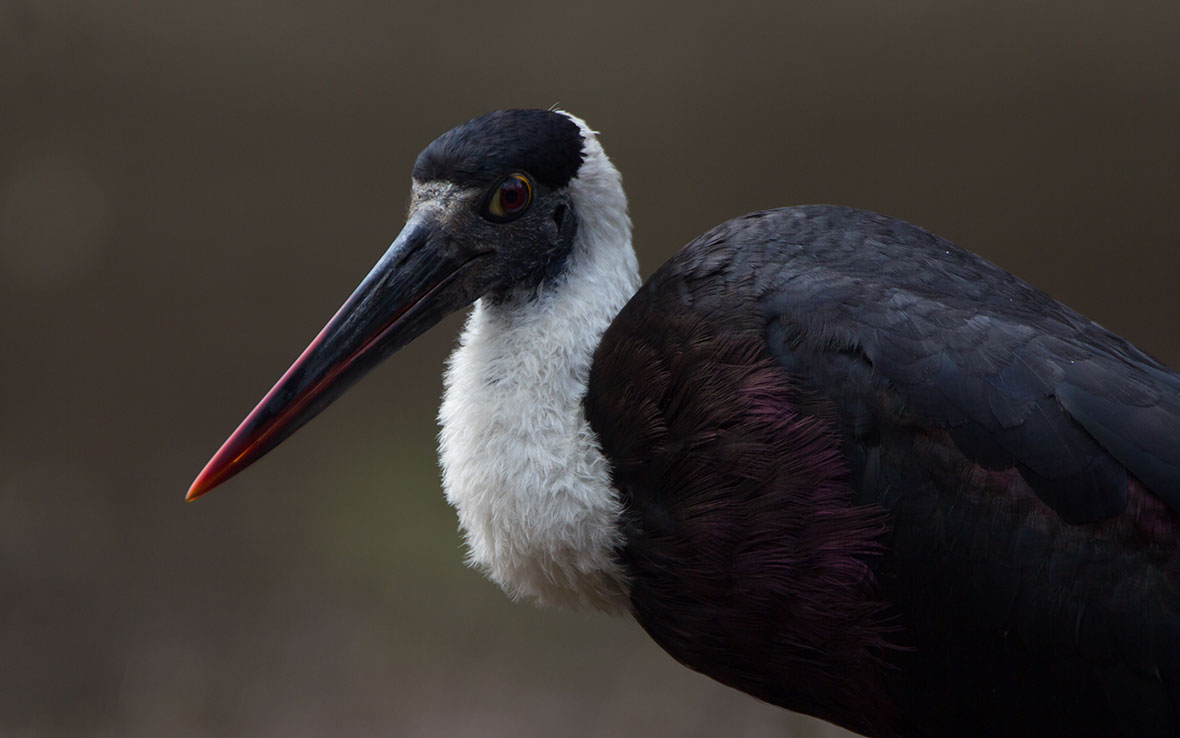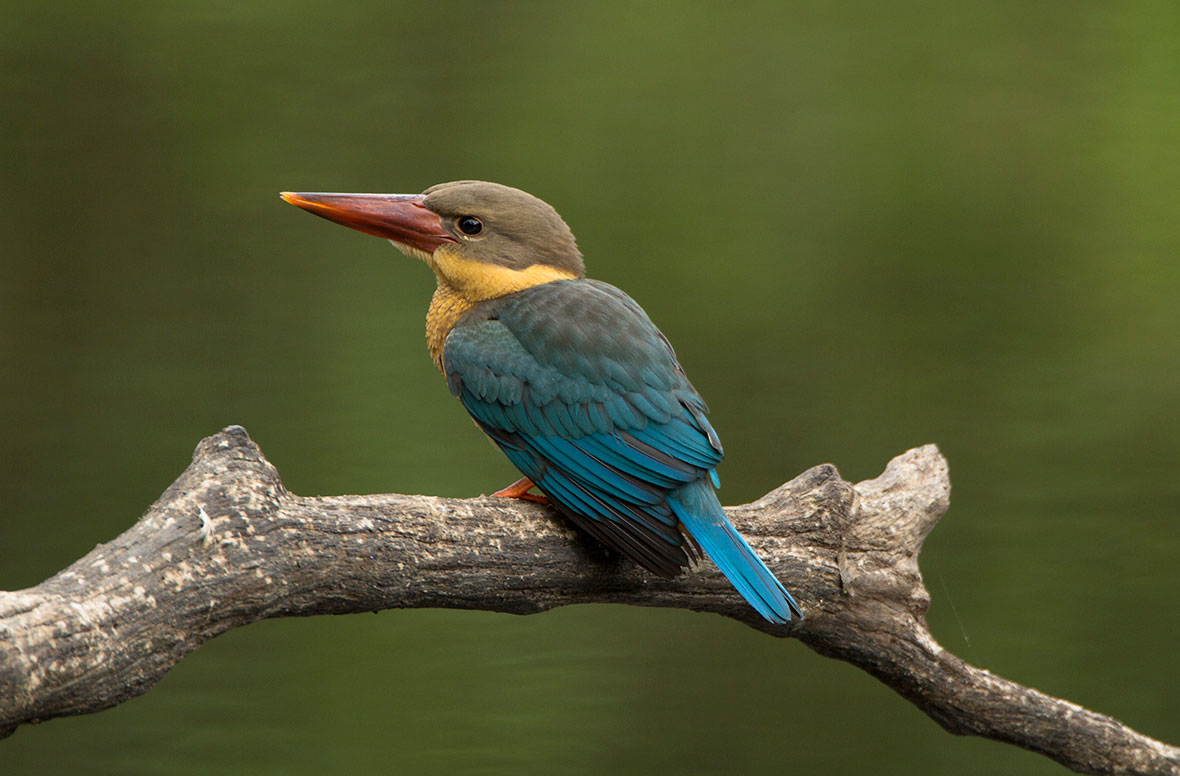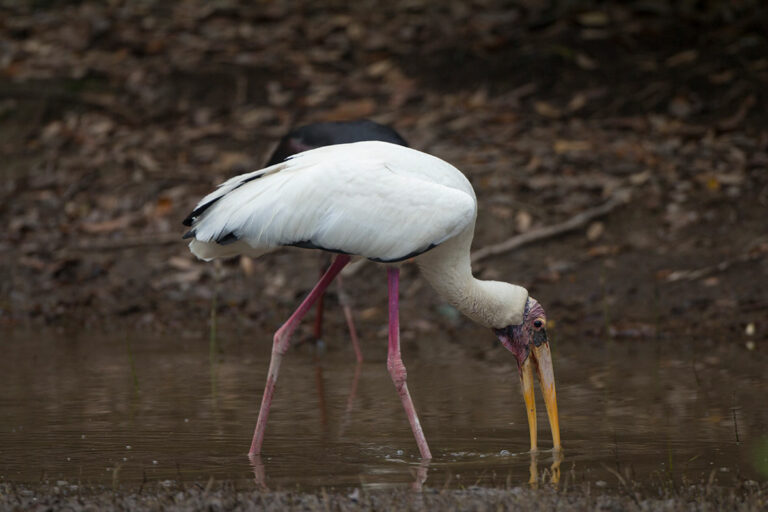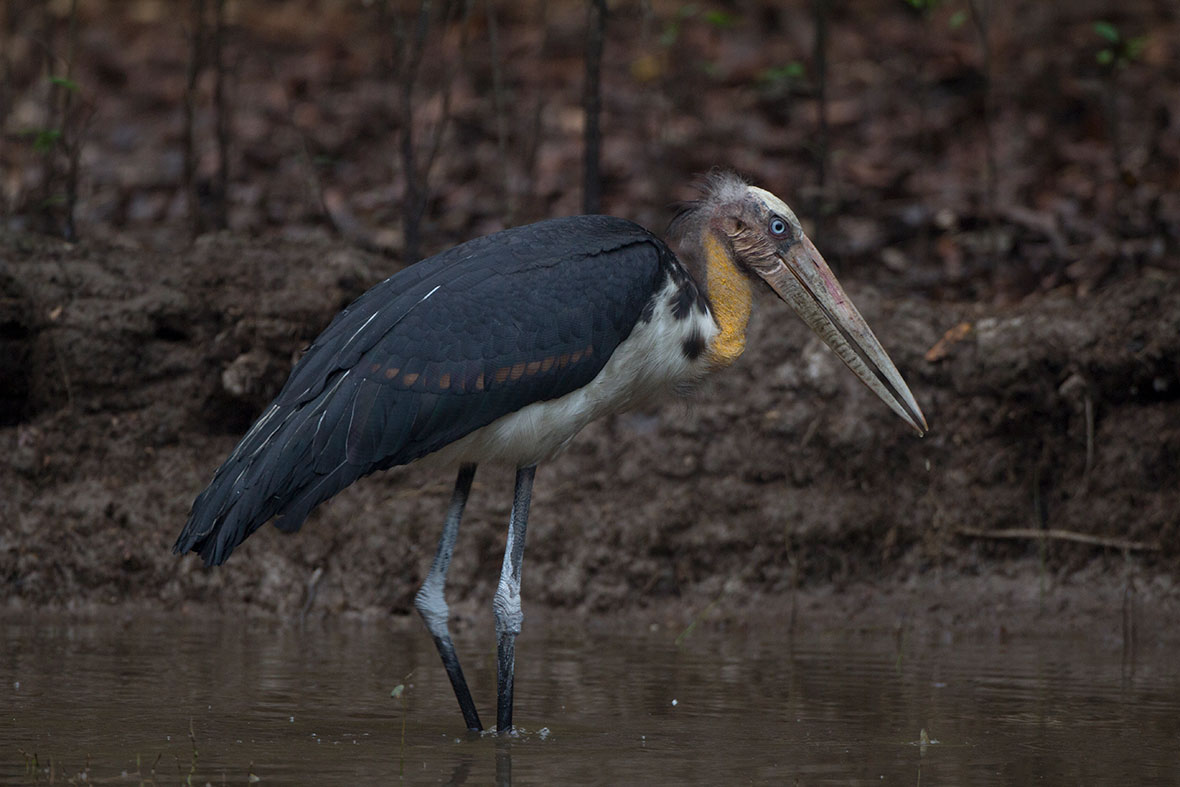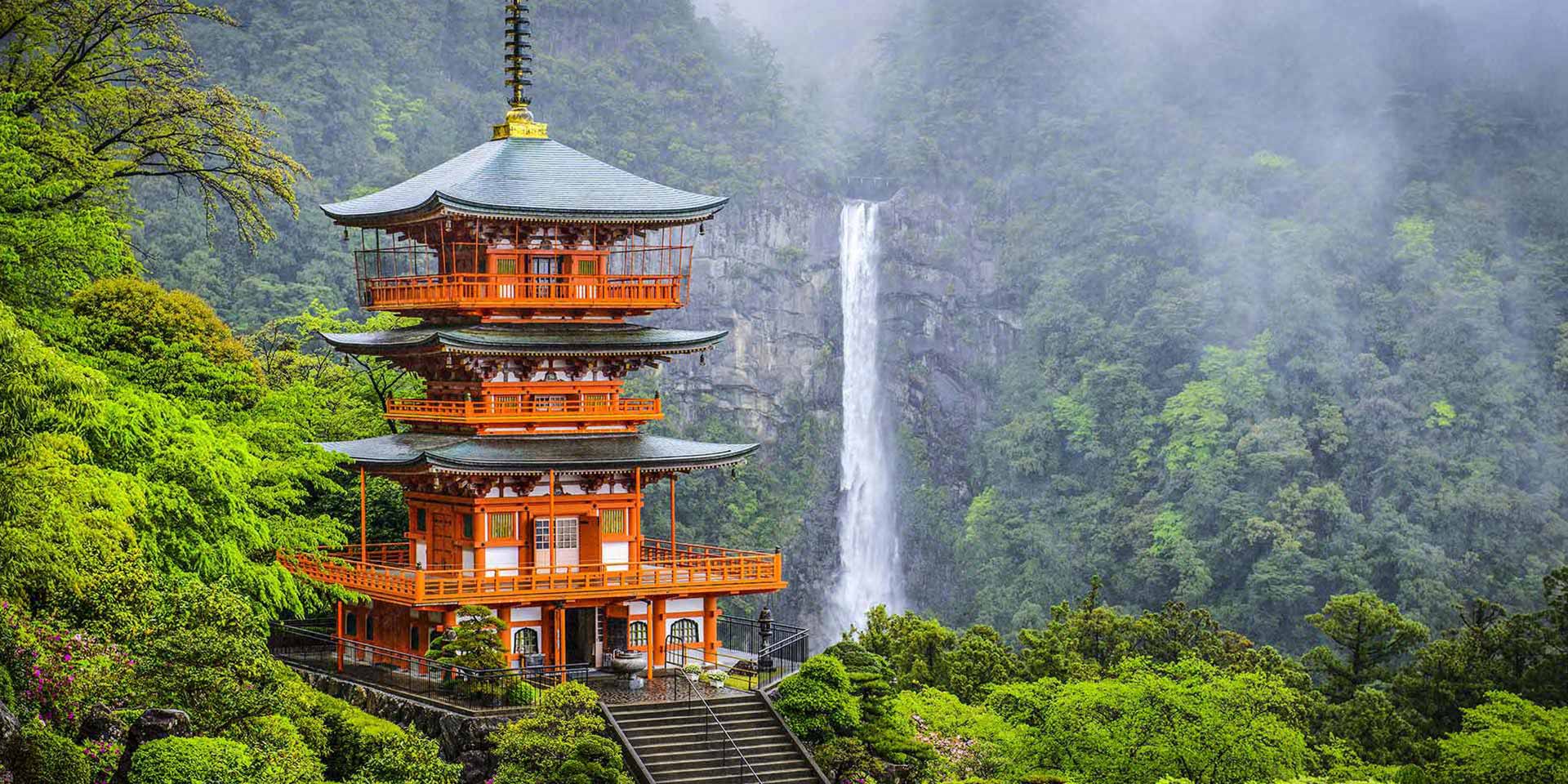Deep in the heart of Botum Sakor National Park in southwestern Cambodia, Chum Kheng, head ranger in these parts, is telling scary stories. Inside his ramshackle ranger station, he recounts tales of the tooled-up poachers who have long plundered these pristine jungles. Evidence of their malignant presence is all around him. Shelves are stuffed with nets and snares with rusty teeth while a collection of crude homemade rifles rest against his chair.
Nestled next to the border with Thailand, the Cardamom Mountains region (of which Botum Sakor National Park occupies a 171,250-hectare chunk) is one of the last remaining wilderness areas in mainland Southeast Asia.
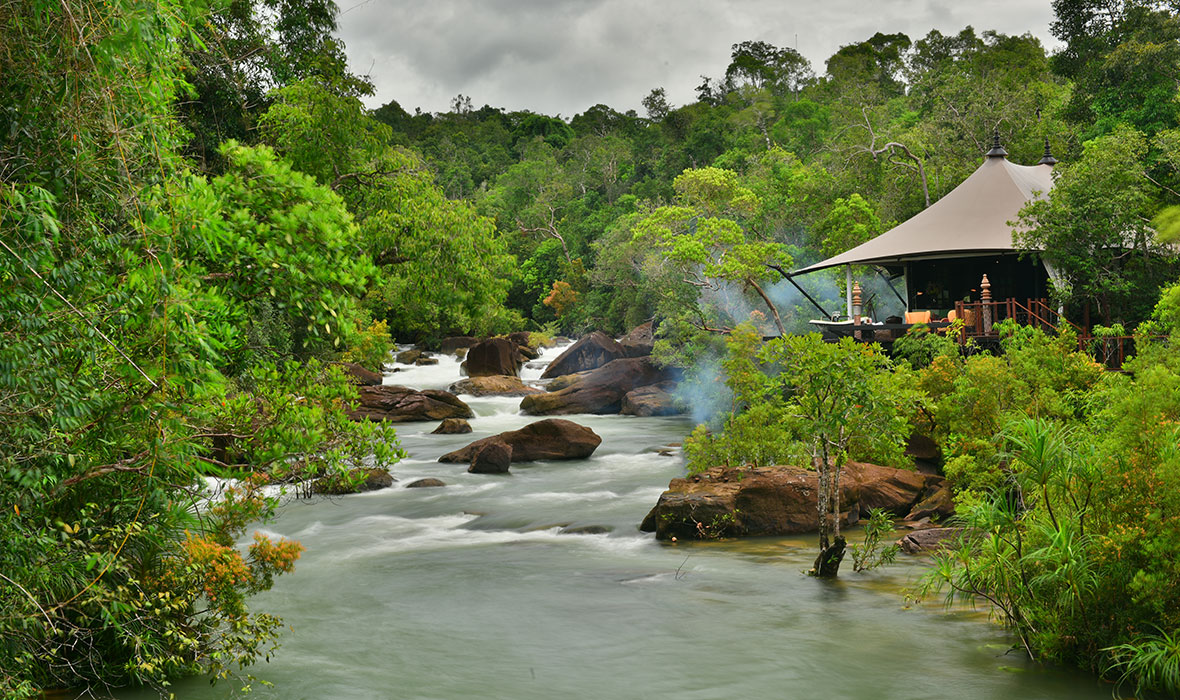
ABOVE: Tents and F&B options at Shinta Mani Wild are perched right next to waterfalls and the swift-moving river.
The forests here are home to significant populations of rare wildlife such as pileated gibbon, Asian elephant and Bengal slow loris. The challenge though is to maintain the area’s status as a treasure trove of biodiversity in the face of nefarious elements that include not just poachers but illegal loggers and smugglers.
For years, NGOs and conservation groups have waged an uphill struggle to protect the Cardamoms region. Cambodia’s rate of deforestation is accelerating quicker than any other nation on earth and the overall balance in the country’s wilder areas remains extremely precarious.
Lately though, star players in the Asian hospitality industry, including resort designer Bill Bensley and Thailand-based hoteliers Minor Group, have stepped in to offer cause for optimism through fresh eco-tourism offerings.
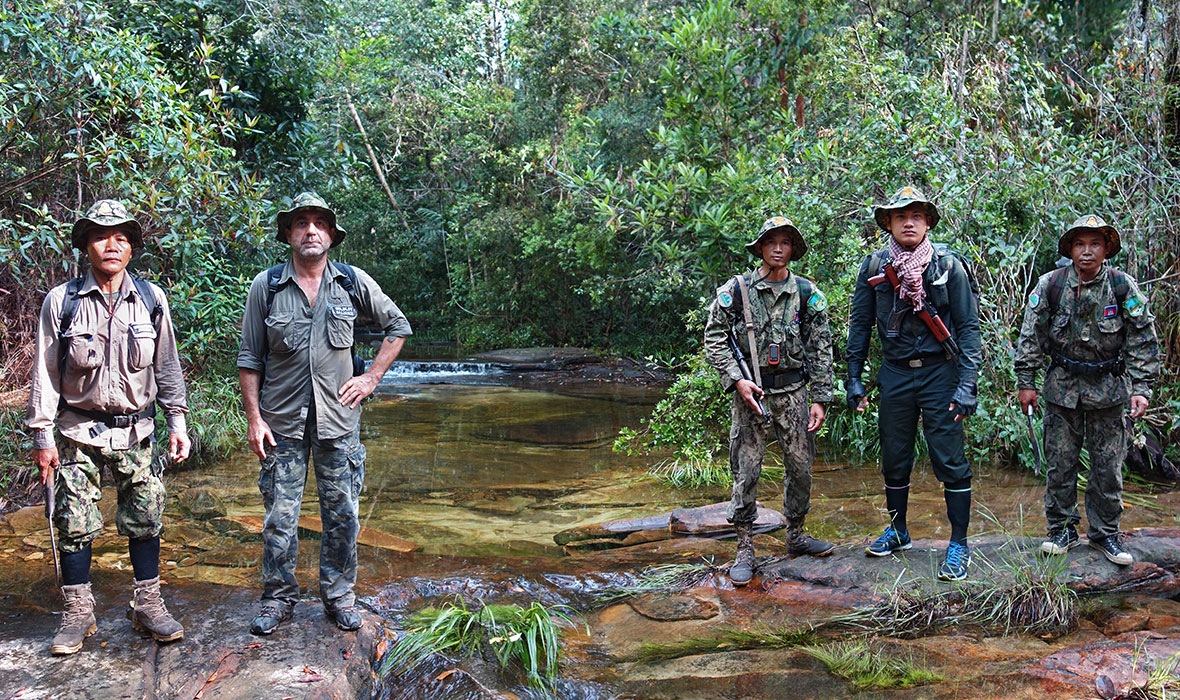
ABOVE: Proceeds from both Shinta Mani Wild and the Cardamom Tented Camp are being put back into the funding of forest rangers, the frontline against poachers in the Cardamoms.
The most ambitious – not to mention luxurious — of these new products is undoubtedly Bensley’s Shinta Mani Wild. Due to open in Q4 2018, the camp project, billed as a private nature sanctuary, showcases the designer’s trademark penchant for flamboyance and flair.
Set along 1.5 kilometers of rushing river and tumbling waterfalls are 16 custom designed tents perched over the swift-moving waters. Tents offer a massive 100sqm of space and feature antique furniture, carefully selected artwork and giant king-sized beds. Each one was meticulously designed by Bensley to evoke the feeling of what it would have been like to be on a luxury safari in the jungles of Cambodia with “Jacky O” (former US first lady Jacqueline Kennedy Onassis, we presume).
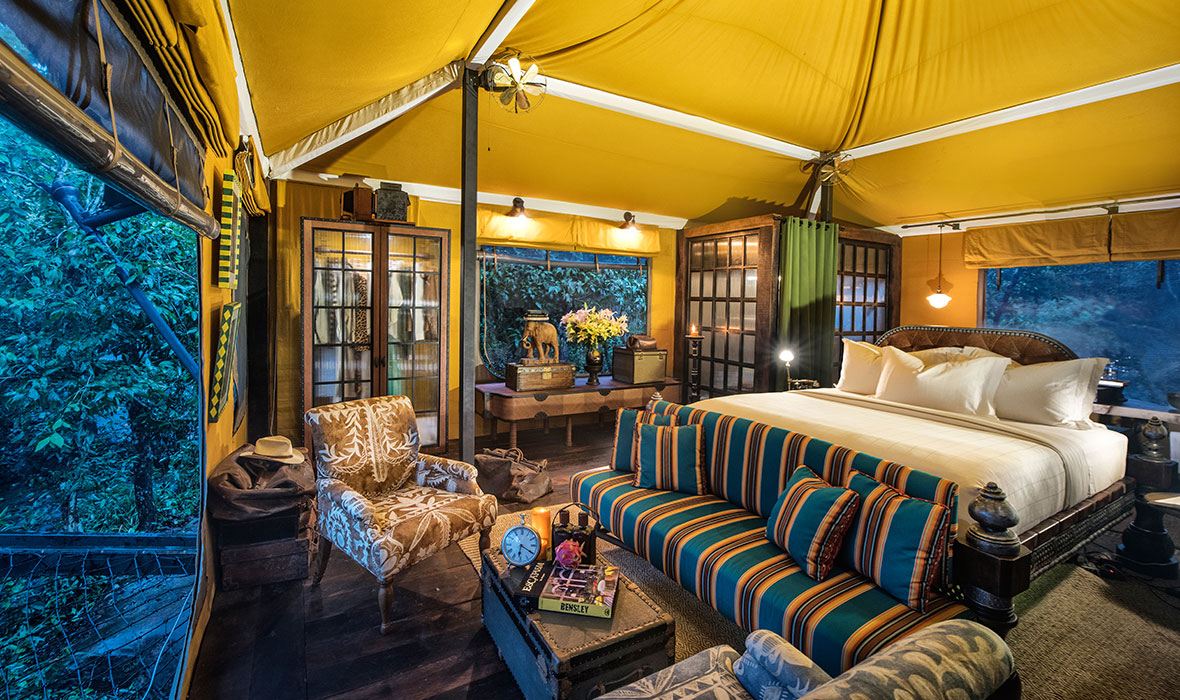
ABOVE: The interiors of the tents at Shinta Mani Wild are decked out in lavish decor, a Bill Bensley trademark.
Other stand-out features of the property will include the Boulders Spa featuring natural, chemical free products by Khmer Tonics and dual F&B offerings, the Landing Zone bar and the Waterfall restaurant.
Perched on the edge of the sanctuary’s largest waterfall, the restaurant will showcase the talents of their chef, who has spent much of the last five years learning about foraged ingredients and the abundance of wild edible plants in Cambodia. Indeed, residents are welcome to accompany the chef as he hunts down natural ingredients in the lush foliage.
ABOVE: The rich ecosystem of the Cardomoms encompasses wildlife such as monkeys, snakes, tropical birds, and exotic flora.
Yet, while the property has all the scene-stealing elements you would expect from a Bensley project, it is the surrounding nature that is the star of the show at Shinta Mani Wild. The trails that circle the camp offer opportunities for wildlife and bird-spotting, while a custom-built Bensley expedition boat with attached kayaks helps guests explore the remote reaches of the waterways.
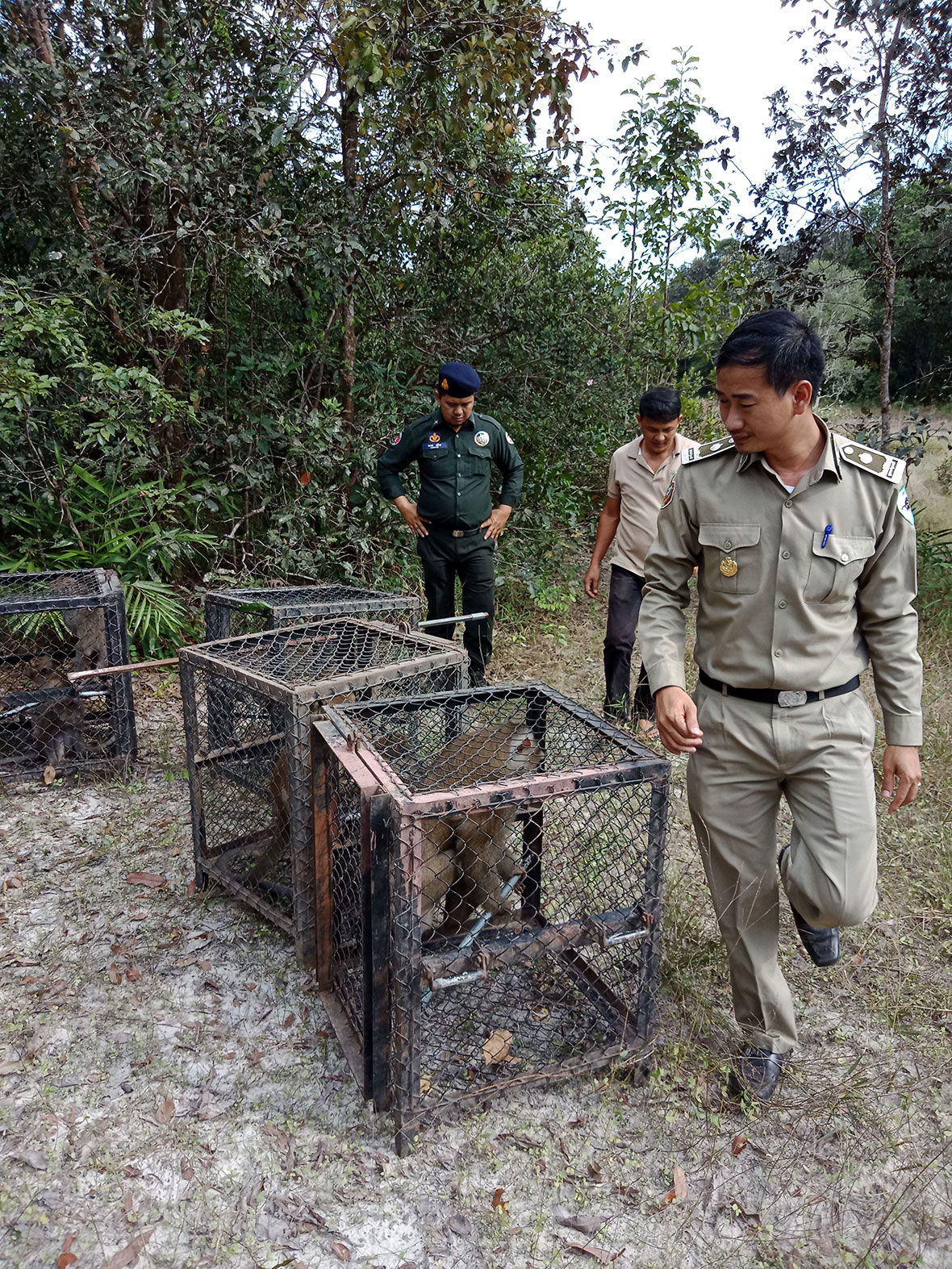
ABOVE:Police display wildlife captured from poachers.
Unsurprisingly, given its focus on nature, the conservation element is strong at Shinta Mani Wild. Located in a previously unprotected wildlife corridor connecting Bokor National Park with Kirikom National Park, the resort will help protect the river valley from poaching, mining and logging. As well as helping to fund rangers and help them in their battle against poachers, the resort will reforest land that has already been logged with indigenous species.
It will also provide long-term training, community outreach and education and employment opportunities to locals in the area: valuable tools in a region where skilled jobs are scarce and the temptation to resort to often more lucrative illegal activities is strong.
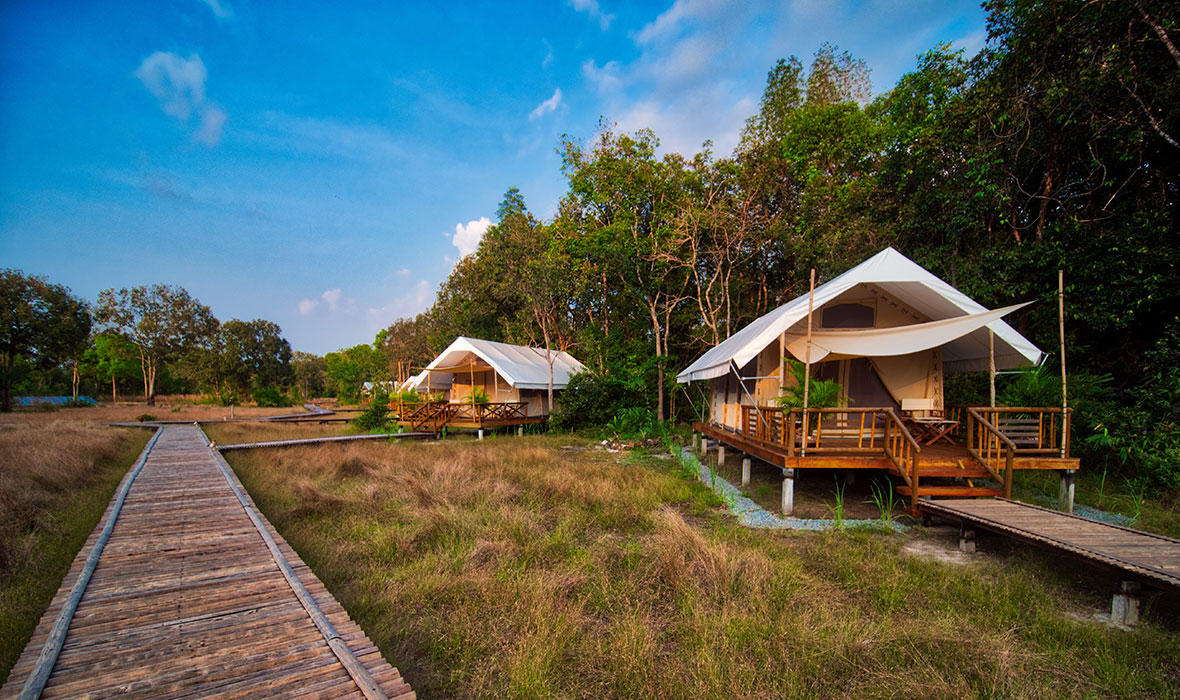
ABOVE: Accommodation at Cardamom Tented Camp is clustered in a grassy, Savannah-like clearing.
“Bill (Bensley) loves Cambodia and this project was a labor of love for him,” says Sophie Couturier, corporate director of sales and marketing at Shinta Mani Hotels. “He personally identified this pocket of land and designed the resort as a way of safeguarding the future of the river valley while offering guests something truly beautiful and unique,”
Southwest of Shinta Mani Wild, in the lower lying forests of Botum Sakor National Park, the Cardamom Tented Camp is another recently-minted project that is fusing elevated hospitality standards with a conservational emphasis.
The retreat, a three-way collaboration between Thailand-based hotel group Minor, adventure travel company YAANA Ventures and non-profit conservation charity, Wildlife Alliance, has been operational since late 2017.

ABOVE: An overview of the thick forests that characterize much of the Cardamoms region of Cambodia.
Proceeds from the venture help to fund rangers’ salaries and procure camera traps and animal tracking devices – all vital components in the battle to preserve the ecosystem and foil the poachers.
Indeed, the fate of the national park is one of the top priorities of the camp. Its literature makes the bold claim that “your stay keeps the forest standing”. Activities, meanwhile, include the opportunity to join the rangers on overnight patrols – an immersive escapade that involves wild camping with no tents and hard trekking of distances up to 20 kilometers. Less robust types might prefer to glean conservation knowledge by hiking to a ranger station or learning about the wildlife in the region from the enthusiastic local guides employed by the camp.
ABOVE:Exotic birds of the Cardamoms, a twitcher’s paradise.
Comfort levels at the camp are not quite at the level of Shinta Mani Wild. But a stay here could hardly be described as roughing it. Simple safari tents are equipped with comfortable king-sized beds and attached rainforest showers, while the camp kitchen serves up tasty Khmer cuisine with gourmet desserts masterminded by the camp’s general manager Alan Michaud – the son of a renowned French chocolatier.
Indeed, it’s very simple to switch off and check out of civilization when your accommodation is at least nine kilometers away from the nearest village.
“It’s the chance to be amidst beautiful nature as much as the wildlife that attracts people here,” says Michaud. “We can’t ensure that you will see a monkey, let alone a gibbon, a bear or some of the rarer forest birds. But we can guarantee peace and quiet.”
So idyllic is life as a tourist in the Cardamoms that it’s easy to forget that these forests and their wildlife populations are at constant risk. The confiscated guns, nets and weapons at the ranger station may appear rather crude – especially when compared to the lavish detailing of Shinta Mani Wild and the homely comfort of Cardamom Tented Camp.

